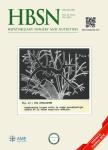Neutrophil extracellular traps contribute to the development of hepatocellular carcinoma in NASH by promoting Treg differentiation
作者机构:Department of PhysiologyMedical SchoolNational and Kapodistrian University of AthensAthensGreece First Department of Internal MedicineUniversity Hospital of AlexandroupolisDemocritus University of ThraceAlexandroupolisGreece Institute for Clinical Chemistry and Laboratory MedicineUniversity Hospital and Faculty of Medicine Carl Gustav Carus of TU DresdenDresdenGermany
出 版 物:《Hepatobiliary Surgery and Nutrition》 (肝胆外科与营养(英文))
年 卷 期:2022年第11卷第3期
页 面:415-418页
核心收录:
学科分类:1002[医学-临床医学] 100214[医学-肿瘤学] 10[医学]
主 题:hepatocellular NAFLD inflammation
摘 要:Non-alcoholic fatty liver disease(NAFLD)is an umbrella term,describing a range of chronic liver disorders associated with fat deposition in hepatocytes,defined as steatosis,and it is mostly emerged in the presence of obesity,hyperlipidemia and insulin *** has been classified as the most frequent liver condition worldwide with more than 10%of NAFLD patients progressing to the inflammatory and fibrotic disorder of non-alcoholic steatohepatitis(NASH),which in turn can lead to end stage liver disease including hepatocellular carcinoma(HCC);the most frequent malignant liver tumor(1).During HCC development the immune system interacts with the tumour microenvironment and it can stimulate its growth by maintaining a chronic inflammatory milieu and the production of factors that favor tumor growth,survival,and *** phenomena may also take place and have significant implications in the transition from NASH to HCC(2).Although,it is well established that chronic inflammation within the hepatic microenvironment is of great significance in HCC development,the exact mechanisms leading to the transition from NASH to HCC are yet to be elucidated.



